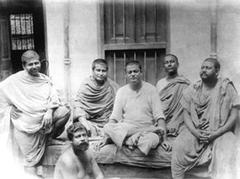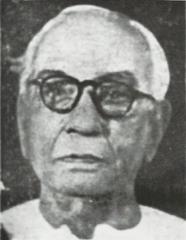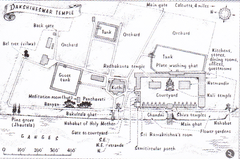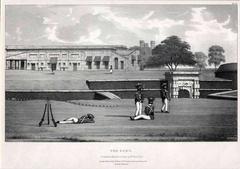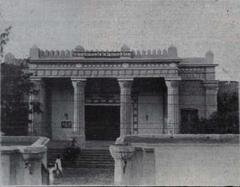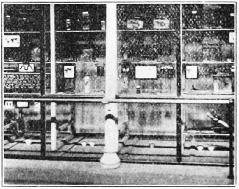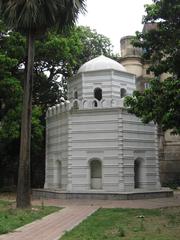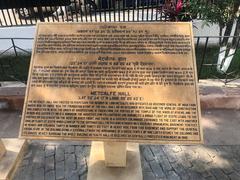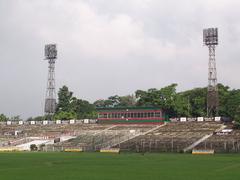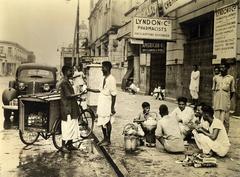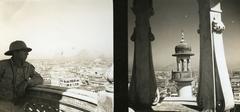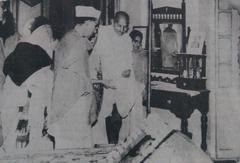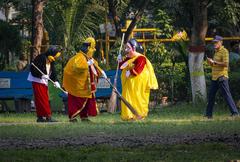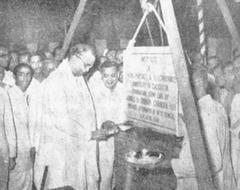Ahiritola Ghat Kolkata: Visiting Hours, Tickets, and Historical Sites Guide
Date: 03/07/2025
Introduction: Discover the Heritage of Ahiritola Ghat
Ahiritola Ghat, situated on the eastern bank of the Hooghly River in North Kolkata’s historic Bagbazar neighborhood, is a vibrant riverfront destination renowned for its deep-rooted cultural, spiritual, and historical significance. Named after the Ahiri cowherd community, the ghat has served as a focal point for religious rituals, community gatherings, and Kolkata’s urban evolution for centuries (GetBengal).
As one of Kolkata’s oldest ghats, Ahiritola is characterized by its traditional stone steps leading into the sacred Hooghly, proximity to the revered Mota Shiv and Bhoothnath Temples, and its central role in major Hindu festivals such as Durga Puja and Maha Shivaratri. The ghat’s daily pujas, idol immersions, and bustling social environment provide a unique lens into the spiritual and communal life of Kolkata (Explore Indian Trails).
Ahiritola Ghat is also a living testament to Kolkata’s layered history, marked by colonial-era architecture, thriving local markets, and a legacy shaped by artists and intellectuals. Its strategic location serves as a key ferry crossing to Howrah, offering picturesque views of the river and nearby landmarks such as the Howrah Bridge (ankitapoddar.com).
This guide provides travelers with comprehensive information on visiting Ahiritola Ghat, including historical background, practical visiting details, nearby attractions, and essential travel tips (Ryask Tourism).
Table of Contents
- Early Origins and Geographical Context
- Colonial Era and Urban Development
- Religious and Cultural Significance
- Evolution Through the 19th and 20th Centuries
- Social and Artistic Legacy
- Contemporary Challenges and Preservation Efforts
- Visiting Ahiritola Ghat: Practical Information
- Frequently Asked Questions (FAQ)
- Conclusion and Recommendations
- References
Early Origins and Geographical Context
Ahiritola Ghat’s name reflects its origins with the “Ahiri” (cowherd) community; “tola” means locality. Located in Bagbazar, the ghat is part of a series of historic riverfront steps along the Hooghly, which have been central to Kolkata’s development since the city’s founding in the late 17th century. These ghats became lifelines for trade, transport, and ritual, shaping the city’s unique riverine heritage (GetBengal).
Colonial Era and Urban Development
During British colonial rule, the ghats, including Ahiritola, gained administrative and commercial prominence. Managed by the Port Commissioner of Calcutta, the ghats received funding for maintenance and became integral to the city’s infrastructure, particularly after the construction of Strand Road in the early 19th century. Bagbazar, home to Kolkata’s elite, flourished with ghats like Bagbazar Ghat and Raja Nabakrishna Deb Ghat also nearby (GetBengal).
Religious and Cultural Significance
Ahiritola Ghat is closely associated with the spiritual life of Kolkata, especially through its proximity to the Mota Shiv (Bada Shiv) and Bhoothnath Temples, dedicated to Lord Shiva (Explore Indian Trails). Daily worship, major festivals like Maha Shivaratri and Durga Puja, and mass idol immersions underscore the ghat’s role as a cultural and religious epicenter.
Evolution Through the 19th and 20th Centuries
Urban expansion in the 19th century altered many ghats. Ahiritola Ghat endured as a vital ferry crossing, linking Kolkata with Howrah, and continued to serve as a site for rituals and community events. The adjacent neighborhoods became hubs for the city’s artistic and political movements (GetBengal).
Social and Artistic Legacy
The ghat and its surroundings have long been centers for cultural activity. Notable families contributed to Kolkata’s artistic life, while the riverfront inspired writers, painters, and photographers. The area also hosted rehearsals for the Great National Theatre in the late 19th century, emphasizing its role in the city’s creative landscape (GetBengal).
Contemporary Challenges and Preservation Efforts
Today, Ahiritola Ghat faces challenges including pollution, crowding, and safety concerns—highlighted by recent incidents such as the 2024 discovery of human remains (Devdiscourse). Local authorities and heritage groups are working to improve security, cleanliness, and conservation to ensure the ghat’s legacy endures (GetBengal).
Visiting Ahiritola Ghat: Practical Information
Visiting Hours
- Open: Daily, 5:00 AM to 9:00 PM (some sources mention 24-hour accessibility, but evenings are quietest and safest for visitors).
Tickets
- Entry: Free; no ticket required.
Accessibility
- Mobility: Traditional stone steps may challenge people with mobility impairments. No ramps or elevators are available.
- Transport: Accessible by metro (Sovabazar Sutanuti or Girish Park stations), bus, taxi, auto-rickshaw, and ferry (Ryask Tourism).
Getting There
- Metro: Sovabazar Sutanuti (1 km away) or Girish Park stations.
- Bus/Taxi: Well served by local buses and taxis.
- Ferry: Ahiritola Ghat ferry terminal connects North Kolkata with Howrah and Baghbazar.
Nearby Attractions
- Kumartuli: World-famous potters’ quarter.
- Sovabazar Rajbari: Historic mansion, especially during Durga Puja.
- Jorasanko Thakur Bari: Rabindranath Tagore’s ancestral home.
- Mota Shiv and Bhoothnath Temples: Adjacent to the ghat.
Guided Tours
- Heritage walks available via local operators, especially during festival seasons (Ryask Tourism).
Photography Tips
- Best light at sunrise and sunset.
- Seek permission before photographing rituals or individuals.
- Festivals provide vibrant scenes, especially during idol immersions.
Frequently Asked Questions (FAQ)
Q: What are Ahiritola Ghat’s visiting hours?
A: Open daily from 5:00 AM to 9:00 PM. Early mornings and evenings are ideal.
Q: Is there any entry fee or ticket?
A: No, entry is free.
Q: Are guided tours available?
A: Yes, local heritage walks are offered and can be booked in advance.
Q: How accessible is the ghat for people with disabilities?
A: Accessibility is limited due to stone steps; assistance may be needed.
Q: What are the best times to visit?
A: Winter (November–February) is most pleasant; festivals like Durga Puja offer a lively experience.
Q: Is the ghat safe for tourists?
A: Generally safe in the daytime. Exercise caution after dark and during crowded events.
Visitor Tips
- Wear comfortable shoes suitable for uneven and wet steps.
- Dress modestly and remove footwear before approaching shrines.
- Carry small cash denominations.
- Dispose of litter responsibly.
- Bengali is the primary language, but Hindi and English are widely understood.
Environmental and Social Considerations
- Support eco-friendly idol immersion and waste management.
- Participate in clean-up drives if possible.
- Respect local customs and religious sensitivities.
Conclusion and Recommendations
Ahiritola Ghat is a vibrant symbol of Kolkata’s enduring heritage, faith, and community life along the Hooghly River. From its roots as an Ahiri community center to its contemporary role in religious and social festivities, the ghat offers visitors a unique window into the city’s dynamic history and culture. Despite modern challenges, preservation efforts by authorities and heritage groups are helping maintain its historical and spiritual importance.
Plan your visit to immerse yourself in the serene riverfront atmosphere, witness colorful festivals, and explore nearby historic neighborhoods like Kumartuli and Shobhabazar (Bharotiyo; India Tourism). For an enhanced travel experience, download the Audiala mobile app for curated guides and updates, and follow our social media for more tips and stories.
References and External Links
- GetBengal
- Bharotiyo
- ankitapoddar.com
- Ryask Tourism
- Explore Indian Trails
- Devdiscourse
- India Tourism
- Travel India One
- MakeMyTrip
